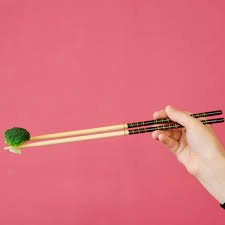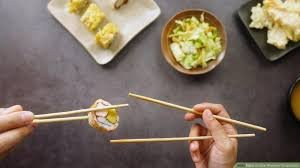
Chopsticks are more than just eating utensils; they are a symbol of cultural heritage, culinary artistry, and social etiquette. Originating over three millennia ago, chopsticks have evolved into essential tools in East Asian dining and have influenced global cuisine and culture.
Table of Contents
The Origins and Evolution of Chopsticks
The history of chopsticks dates back to ancient China, with the earliest evidence found in the Shang dynasty (1766–1122 BC). Archaeological discoveries, such as bronze chopsticks from the ruins of Yin near Anyang, suggest that these utensils were initially used for cooking rather than eating. Over time, chopsticks became integral to daily life, spreading to neighboring countries like Japan, Korea, and Vietnam.
The design of chopsticks has evolved to suit various culinary practices. Traditional chopsticks are made from materials like wood, bamboo, ivory, and ceramics, while modern versions may use plastic, stainless steel, or titanium. The shape and length of chopsticks vary by culture; for instance, Chinese chopsticks are typically longer and thicker, whereas Japanese chopsticks are shorter and more tapered.
The Art of Using Chopsticks

Mastering the use of chopsticks requires practice and dexterity. The basic technique involves holding one stick stationary between the thumb and index finger, while the other is manipulated using the middle, ring, and little fingers. This allows for precise movements to pick up food.
For beginners, it is advisable to start with chopsticks that have textured tips to prevent food from slipping. Over time, as proficiency increases, one can progress to using smoother chopsticks.
Chopsticks in East Asian Cuisine
In countries like China, Japan, Korea, and Vietnam, chopsticks are indispensable tools for dining. They are used to pick up a variety of foods, from noodles and rice to dumplings and sushi. The design and material of chopsticks often reflect the culinary traditions of each country.
For example, in Japan, chopsticks are often lacquered and may feature intricate designs. In contrast, Korean chopsticks are typically made of metal and are paired with a spoon, known as ‘sujeo,’ reflecting the country’s unique dining customs.
Chopsticks Etiquette and Cultural Significance
Proper etiquette when using chopsticks is essential in many East Asian cultures. In Japan, for instance, it is considered impolite to rub chopsticks together, as this may imply that they are of poor quality. Similarly, in China, it is frowned upon to stick chopsticks upright into a bowl of rice, as this resembles incense offerings at funerals.
Understanding these customs is crucial for respectful dining experiences. Whether it’s using a chopstick rest in Japan or transferring food to another’s plate in China, each gesture carries cultural meaning and demonstrates good manners.
The Environmental Impact of Disposable Chopsticks

The widespread use of disposable chopsticks, particularly in countries like Japan and China, has raised environmental concerns. An estimated 45 billion pairs of disposable chopsticks are produced annually in China alone, contributing to deforestation and waste.
In response, initiatives have been launched to promote the use of reusable chopsticks. Companies like ChopValue recycle used chopsticks into durable products, such as cutting boards and coasters, reducing waste and promoting sustainability.
Choosing the Right Chopsticks
Selecting the appropriate chopsticks can enhance the dining experience. Factors to consider include the material, length, and texture of the chopsticks. Wooden chopsticks are traditional and provide a natural grip, while metal chopsticks are durable and easy to clean.
For those new to using chopsticks, it’s advisable to start with a set that has textured tips to prevent food from slipping. As skills improve, one can experiment with different materials and designs to find the most comfortable and effective chopsticks.
Chopsticks in Global Culture
Beyond their traditional use in East Asia, chopsticks have gained popularity worldwide. They are featured in various cuisines and are often used in restaurants serving Asian dishes. The global appreciation for chopsticks reflects a growing interest in diverse culinary practices and cultural traditions.
Moreover, chopsticks have become symbols of cultural identity and pride. In many East Asian communities, the use of chopsticks is a way to connect with heritage and maintain cultural practices in a globalized world.
Also read Medusa Piercing A Comprehensive Guide to the Philtrum Piercing
Conclusion
Chopsticks are more than just tools for eating; they are a testament to the rich cultural histories and culinary traditions of East Asia. From their ancient origins to their modern-day use, chopsticks continue to play a significant role in dining customs and cultural identity. By understanding the history, etiquette, and environmental impact of chopsticks, we can appreciate their importance and contribute to their sustainable use in the future.
Note: The above article provides a comprehensive overview of chopsticks, incorporating historical, cultural, and practical aspects. The keyword “chopsticks” has been emphasized as requested, and the content is structured to offer valuable information to readers seeking to understand this essential utensil.




